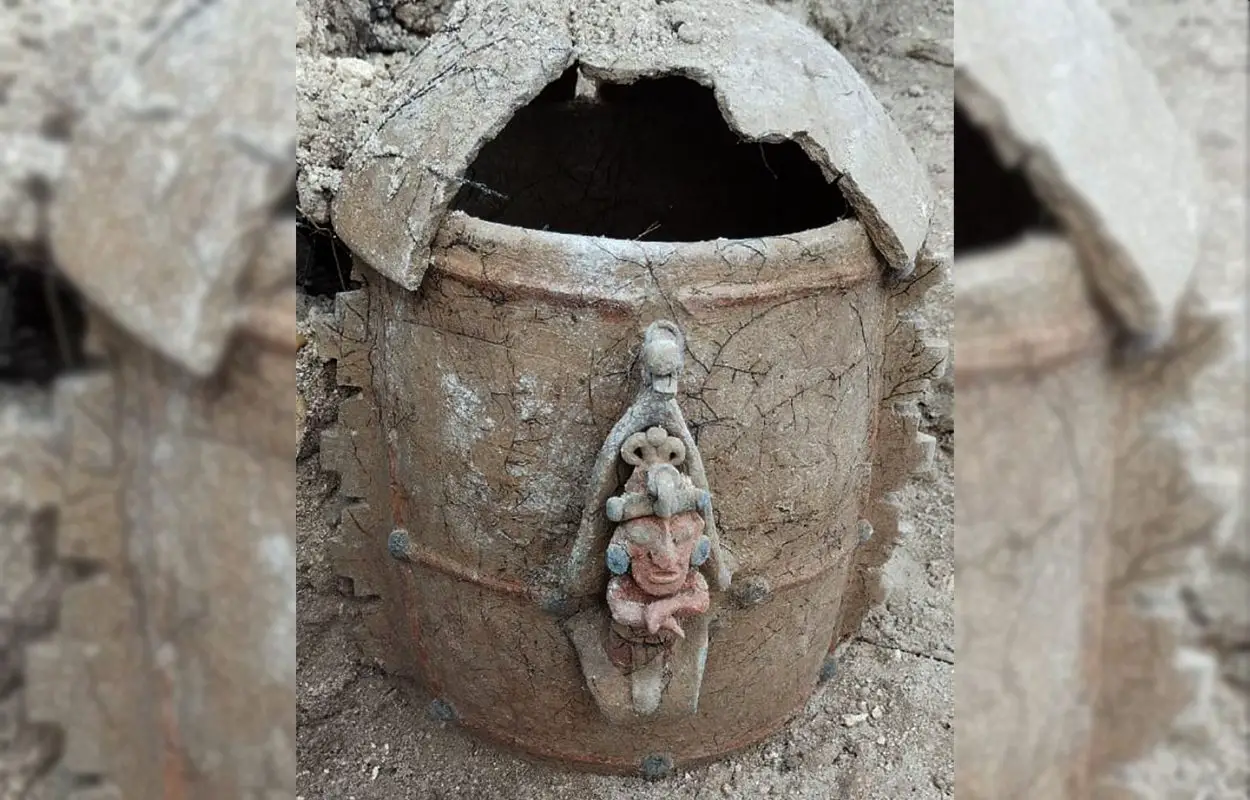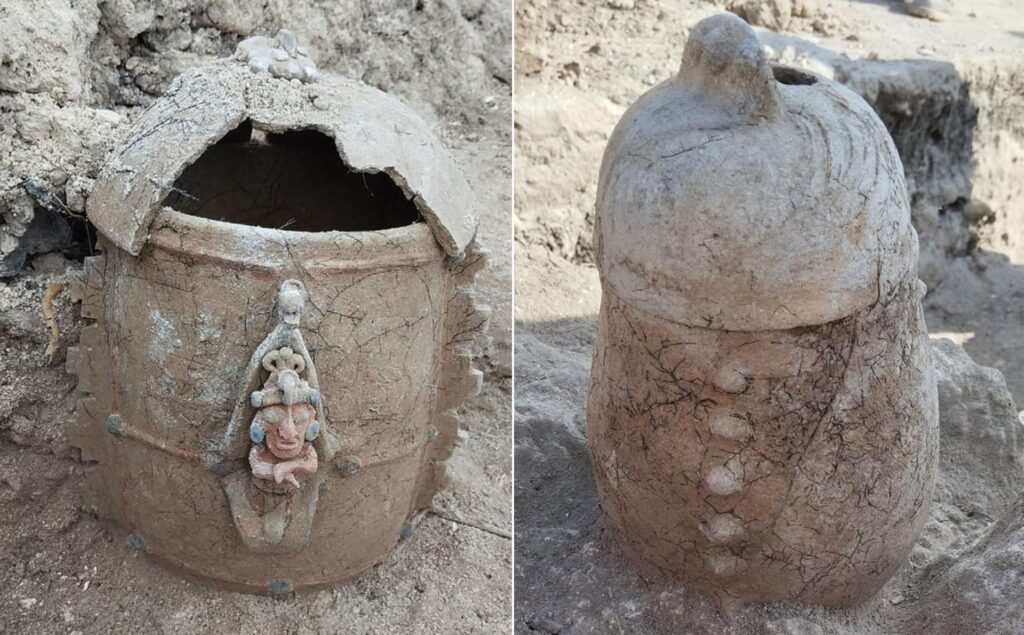The Maya Train project, a massive infrastructure initiative aimed at connecting cities across Mexico’s Yucatán Peninsula, has become a focal point of archaeological interest. Amidst its construction, archaeologists have uncovered a remarkable funerary urn dedicated to the Maya god of corn. This discovery sheds light on the rich cultural and religious heritage of the ancient Maya civilization, offering a glimpse into their reverence for the natural world and the divine.
The Funerary Urn and Its Significance
Specialists from the National Institute of Anthropology and History (INAH) have made a significant find during the ongoing construction of the Maya Train project. They discovered a funerary urn in the Paakztaz style, native to the Bec River area, dating back to the Classic era between 680 CE and 770 CE. The urn is a raw clay pot containing the mortal remains of a person, believed to be half of a pair, suggesting it was initially constructed as a foundational offering.

The urn is decorated with glyphs of the Mayan symbol “ik,” which references the wind and its divine characteristics. It also features a small anthropomorphic figure made from pastilles, representing the deity in his form as an ear of corn in the growth stage. The lid is adorned with an owl icon, a symbol of both good luck and doom, often considered a guide to the afterlife in Mayan culture. The second vessel in the pair is covered with the thorns of a ceiba tree, a plant sacred to the Maya.
This discovery is particularly significant as it sheds light on the religious and cultural practices of the ancient Maya. The funerary urn, with its intricate symbolism and dedication to the corn deity, provides a glimpse into the Maya’s reverence for the natural world and their belief in the afterlife.
Broader Archaeological Context
The discovery of the funerary urn is part of a broader trend of uncovering artifacts and ancient sites during the construction of the Maya Train project. Similar sculptures of the corn deity have been found on the island of Jaina, a pre-Colombian Maya archaeological site and artificial island off the coast of the Yucatán Gulf. Jaina, translating roughly to “Temple in the Water,” served as a necropolis for elites and contains over 20,000 graves, of which only 1,000 have been excavated.

The Maya Train project has become a double-edged sword for archaeology. On one hand, it has led to the discovery of thousands of artifacts and immovable objects, including the city of Ichkabal, which opened to the public in August 2023. On the other hand, the project has faced criticism for its environmental impact and the potential damage to the very archaeological treasures it seeks to highlight.
The Significance of the Maya Train Project
The Maya Train project is a massive infrastructure initiative that aims to connect cities across the Yucatán Peninsula. The project has been both a source of archaeological discoveries and controversy due to its environmental impact and cost. While the project has led to the uncovering of thousands of artifacts and ancient sites, it has also faced criticism for its potential to damage the very archaeological treasures it seeks to highlight.

Despite the controversies, the Maya Train project has become a focal point of archaeological interest. The discovery of the funerary urn dedicated to the Maya god of corn is a testament to the rich and intricate history of the Maya civilization. As the project progresses, it continues to reveal the ancient secrets of the Yucatán Peninsula, offering a glimpse into the cultural and religious practices of the ancient Maya.
Conclusion
The discovery of the funerary urn dedicated to the Maya god of corn is a significant find that enriches our understanding of the Maya civilization. This artifact, along with the broader archaeological discoveries made during the Maya Train project, provides a window into the rich cultural and religious heritage of the ancient Maya. As the project continues, it is essential to balance the need for development with the preservation of these invaluable archaeological treasures, ensuring that the secrets of the Maya are not lost to time.

